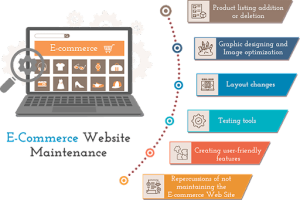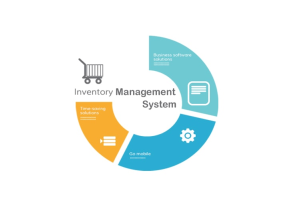Enhancing Customer Relationships with Jain Software’s CRM
In Business, Official BlogIn the modern world of stiff business competition, the tangible and intangible customer relationships form the core of any business entity. Managers who acquire adequate knowledge of their customers are in a position to comprehend their wants, desires, and actions therefore being in a better position to deliver the best customer services. That is when the companies use what is known as Customer Relationship Management (CRM) systems. The CRM solutions which are being offered by Jain Software are directed to boosting the customer relations, growth and effectiveness of businesses.
Understanding CRM
A CRM system is a way of handling a business’s communication with its consumers and live possibility consumers. CRM relies on information gathered about customers’ previous experiences with specific organizations, and aims at enhancing the business relations with the clients with the overall goal of increasing the company’s sales. The CRM provided by Jain Software tries to cover areas typically grouped under the CRM umbrella and provide the customer with a variety of tools and functions.
Important Functions of Jain Software’s CRM
1. Comprehensive Customer Data Management
By implementing Jain Software’s CRM, companies can gather and analyze large amounts of specific information about customers to store it in a single location. This is because they contain such details as the customer’s phone number, any past orders he or she may have made, his or her email and general communication history as well as those features that capture the customer’s preferences. To have all this information aggregated in one place means that every time a client is being dealt with, their history is well known.
2. Instant Work flow and Task control
There are four key aspects, which characterize Jain Software’s CRM: data management; accessibility and intuitiveness; personalization; and, last, though not the least, automation. It allows the firm to work on such administrative functions as following up with the clients, booking of meetings, responding to inquiries among others. Through this, the business can be able to closely monitor that no customer is left without attention or any task is lest undone.
3. Advanced Analytics and Reporting
The paper under discussion deals with the concept of customer behavior which is vital in improving customer relations. Jain Software’s CRM also has hr analysis and reporting tools that help businesses make wise decisions based on customer interaction along with sales and performance. From these insights, it is possible to make the right decision on matters that affect the customer and the growth of the business.
4. Integration with Other Systems
Jain Software CRM can connect to other business applications including ERP solution, marketing automation, e-business, etc. It is possible because the information flow between different systems is maintained to ensure the continuity of all customer data that will lead to a coherent picture of the entire customer’s experience.
5. Mobile Accessibility
The availability of CRM data in portable media format is a necessity in today’s mobile it environment. Yet another advantage of Jain Software’s CRM is its mobile application compatibility; thus, the sales team and customer support agents can view client information and handle tasks anytime and anywhere.
6. Customization and Scalability
CRM requirements vary from enterprise to enterprise; therefore, every business is exceptional in its needs for CRM solutions. Much to the client’s convenience, Jain Software’s CRM comes with exceptional adaptability and flexibility that lets organizations design the system to their needs. Also it is easily scalable to accommodate businesses ranging from start-ups to the large corporate organizations.
Advantages of the Jain Software’s CRM
1. Improved Customer Satisfaction
The result will be great given that such an approach will enable organizations to make quick responses depending on the previous history of actions offered to a particular customer. This in turn results in increased traffic and satisfaction levels from the customers. Consumers are appreciative of their trader when their needs and wants are recognized and fulfilled.
2. Increased Sales and Revenue
Through CRM, Jain Software assists the businesses to identify sales leads and deals most efficiently. By being able to look into the customers’ behavior more closely, the sales teams adjust the way they sell; hence have higher chances of converting their clients and a consequent improvement in revenue.
3. Enhanced Communication
This paper concludes that proper communication is one of the critical components of successful customer relationship management. Concisely, Jain Software’s CRM features every tool one might need to monitor all customer intercommunications, thus guaranteeing relevance. It also enhance the relation between firm and customer which not only make up to the satisfaction level of the consumers.
4. Streamlined Operations
The specific benefit of using Jain Software’s CRM functionality is that it performs repetitive activities with the aim of releasing time for the delivery of higher value tasks. This in turn results in enhancing of over all efficiency and productivity. Further, having all the customers’ data in a central location means that the probability of making wrong assumptions is minimized and you achieve synergy with your colleagues.
5. Better Decision Making
There is always a possibility for the business organizations to have a strategic position in making better sales decisions and analyzing customer buying behaviour with the help of developed analytical and reporting tools. These help organizations make right decisions for improvement of business and customer relations. Regardless of what it is, be it the discovery of a new market niche or simply a constant problems faced by customers, having the right data is essential.
Real-World Applications
1. Healthcare Industry
Relationship management is a central point of contention in the operation of most healthcare facilities. As for the application, Jain Software’s CRM can assist healthcare providers in organizing the information of the patient, appointing times for the visits, and sending out alerts in the process. Thus, health providers can try and achieve high satisfaction and loyalty by offering custom services and effective communication.
2. Retail and E-commerce
In the field of retail/ e-tailing it is imperative to be aware of various trends which can be useful to know a customer and their buying behavior. CRM solution of Jain Software enables a business organization to record customers’ communications and manage the marketing strategies and sales figures. This translates into customer satisfaction, and therefore the overall sales are boosted.
3. Financial Services
It is a fact that accounting company companies handle customer’s cash and so on, they need to get high level of customer’s trust. As for the functions, Jain Software’s CRM has the capabilities to protect the customer information, share the interaction history, and deliver financial advice. This creates confidence and good rapport between the clients and the business.
4. Education Sector
Administrative and academic data can also be handled through a customer relationship management system obtained from Jain Software that would cover the student population. In particular, offering delicate treatment, as well as well-organized communication, are opportunities to improve such factors as students’ satisfaction and their staying at the educational institution.
Implementation and Support
The adoption of a CRM tool itself may not be easy all the time and that is why Jain Software offers extensive help in a smoother way of adopting the system. Right from the phase of consultation and configurations to the phase of training and development, Jain Software guarantees the optimum utilization of CRM by every business.
Conclusion
Altogether, the improvement of the relationships with customers is critical for the business, and CRM of Jain Software offers all the requirements and options to do that. The full-fledged Jain Software CRM incorporates customers’ full information, works diligently based on i, analytical tools, and integration that ultimately leads to prolonged customer relations, higher sales, and smooth running of operations. This CRM can be suited to any Charisma industry irrespective of what the sector may be healthcare, retail, financial service or education, Jain Software will ensure that the firm can build long lasting customer relationships.












